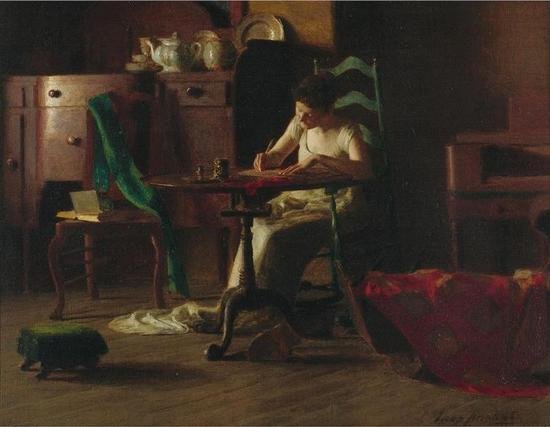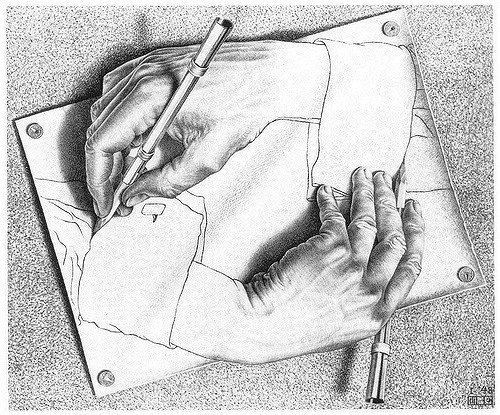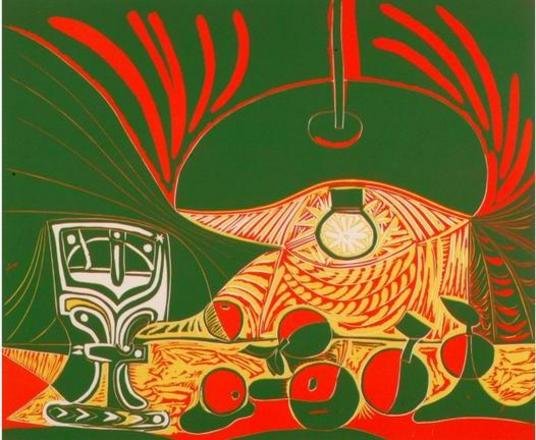ADSactly Literature: *The Place of the Writer* of Victoria de Stefano or the Self-Awareness of the Novel (Part II)

Friends, here the continuation and closure of the study on the novel The place of the writer by Victoria de Stefano (For part I, go to this link).

In the second part, the writer is in his "place", prepares himself for writing and faces the difficulties of such an act. In the third part, he goes out into the street, as a metaphor for the necessary exit to the world that must be fulfilled in the process of literary communication. Both parts will also be crossed by the continuous meditations on the act of writing, which reinforces the novel's self-reflexivity. Through such ponderings, various aspects will be thematized that emphasize the sense pointed out, among them: the resistance of creative effort ("Patience and tenacity, the patience of an ox, the tenacity of a criminal: the highest capacity of resistance"), the transformation of life by writing ("It is strange, I can write the saddest things and not get sad. Writing I invigorate myself, like a beautiful passing horse..."). Special mention should be made of the analogy established between the quiet work of nature, time and the hard work of writing, expressed in the work of correction. Thus we can read:
Nothing waiting, she works, works, attentive to the slow work of her secret organs, of her intermittent resurrections. From the embryo, the grass, the flower, the tree, the fruit must grow in silence. Let not even the rumour of a blade be heard to pierce the lightness of the air. Work. The work of the centuries is just a sigh.
(...) to correct is an insane and continuous rectification, it is to put everything upside down when it was believed that everything was standing. Again, from the beginning. (...) It's the job, isn't it? It is achieved very late, at the cost of much, and when one is close to achieving it, close to the promised land, it loses all fascination. Was this, just this, just this?

The office of writing, its labor given up, hardened and silent, acquires new meaning thanks to this correlation with the process of nature, as it seems to be happening in the course of this novel. This meaning will be emphasized below, in opposition to the torment of life:
A colt of torment which, compared with the pain of life, is nothing: from the pleasure that the writer gives him, he will obtain the measure of his talent and his truth.
Two nuclear images stand out in all this metafictional elaboration: the room and the lamp. Both images will act as figurative resources to underline the solitude and concentration of the writer's creative work; they demarcate an atmosphere and an interior space through an exterior presence. The narrative voice says about the lamp: "(...) it was without a doubt my lamp. Twenty years giving me light! I could tell about his adventures, which was like saying a good part of my life (...)" ; "In my room, in the whole house, there is no more light than that of my old lamp on my desk". The lamp is a symbol of rest, of silence and of vision. This is how the protagonist narrator reflects when, by means of a narrative flashback, he establishes the association with the painting seen in the New York Museum:
I remember its title, below and to the right. Where are my glasses? Still life under the lamp. Vase, fruits, trays, objects in the luminous extension, in repose and stillness, in a sort of silent withdrawal. (...) The light, the darkness, the high dividing threshold of the waters. A life that opens from the outside to the inside. Inside, more inside, to the point of seeing clearer.

But it is the image of the room that takes on greater significance, for it will specify the condensed senses in that "writer's place". A refuge for creation and a fictional space for life, which is the novel itself. Two very punctual quotations allow us to illustrate what has been said:
Now I had a life of my own, very mine, a place in my own room, a window from which to contemplate a piece of landscape and inflate the detail, from inside to outside, in their beautiful and secret relationships.
My room is the vibration of my voice, hear it as it trembles. My room is the projection of my whole being and my multiple beings, virtual, potential, yet to be born, yet to die and transform. My room and my being are the same thing (...)
We read a fragment introduced almost abruptly, where the story folds on itself, and takes us to that plane to which we have been sliding discreetly:
Now I write, in the middle of what I write I stop. In reality, one is always in the middle of what one writes, because writing never ends. Books do, books have a beginning and an end, a cover that opens and another that closes (...), but writing (...), always virtual no matter how much one acts, has no end, unless we call the merely contingent fact of old age and death final.
Metafictionality is consummated: the self-reflective and self-referential discourse constitutes the essence of the novel, the one that is written and read. The writer's place is, at the same time, the place of writing, of fiction that thinks of itself and, at the same time, looks at reality.

Bibliographic reference
Stefano, Victoria (1992). The place of the writer. Venezuela: Grupo Editor Alter Ego.
Written by @josemalavem
Click the coin below to join our Discord Server
)
I like the idea of writing as something eternal and beyond contingencies
I was thinking about Frank Baum, the author of The Wizard of Oz and the fact that many of the books in that series were actually written by ghost writers, even after Baum had died. This may be an extreme example of a writer who kept writing beyond death, but the act of writing per se supersedes the writers themselves and transcends indidual existences. That's the beauty of it.
I like the texts that tell us about the process that led to their production or the production of some other texts. By allowing us to vicariously explore the secrets behind the magic tricks, this kind of literature makes itself accessible (democratic?) and more understandable.
Thank you for your comment, @hlezama. Several writers (Borges, Ítalo Calvino, among whom I can quote now in the narrative) thought and, to a certain extent, carried out part of their work, in the idea of the virtuality of writing: one that is remaked in each reading, which is never definitive and conclusively. Moreover, contemporaneity (and within it postmodern thought) enthroned the vision of a creation that questions itself and can reveal its games and intricacies.
@josemalavem, Writing goes through from many Streams but when writer sit at one place in silence, his/her thoughts travel the whole universe and come up with the writing piece which opens the world of every aspect.
Posted using Partiko Android
Yes, writing is an act and process that originates and returns to silence. Thank you for your comment, @chireerocks.
Welcome and that's true.
Posted using Partiko Android
Writing requires having a capacity, an environment and a mental and physical disposition that sometimes we do not have, and that is when writing is elusive, difficult and not so optimal. Apparently in your quotes, the main character of this novel, a writer, goes through a moment of aridity, so normal when we write, to then find that voice that comes as if it had never left. Personally, as a writer too, I like stories that go deeper into what it means to write, whether poems or stories, and which character in the novel or author of the novel, De Stefano, go making the story as you talk about it, as a recipe. The writer's place is a novel that must be read not only to relax, but also to understand and know the world where a writer is born and lives. Thank you for this work. Greetings, @josemalavem
That's right, @nancybriti. In Victoria de Stefano, as in many other contemporary writers, there is what someone called the "grammar of creation", which implies a very lucid awareness of its process and its act, in its interstices, folds and folds. To that extent, writing and life act almost like mirrors that are reflected, auscultated, and even transformed.
Thank you for your kind comment.
You have done an excellent job of analyzing this novel! I am left with the feeling of being between two mirrors, reflecting myself and my surroundings over and over again, infinitely. This sounds like a book I would both love and hate! Like the state of writing, producing until the moment of death, a blissful torment. Very rich, magic mushroom-y.
Thank you for your feedback, @owasco. Your appreciation, with a very peculiar feature, is very valid, although perhaps the novel is not as dramatic as you think. Greetings.